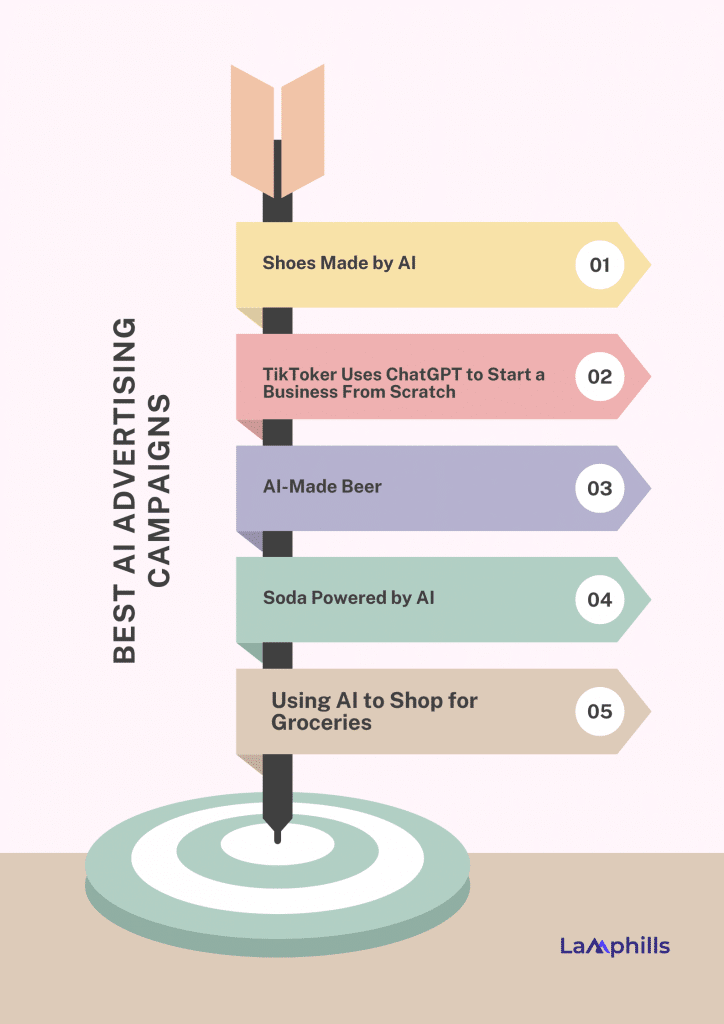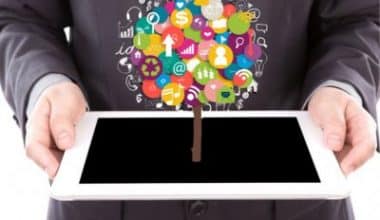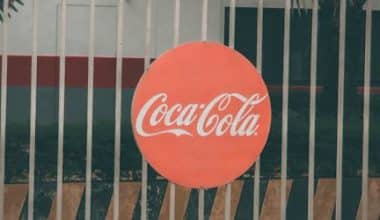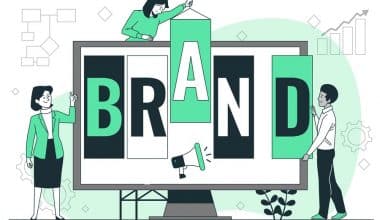In recent times, marketers, including writers like me, have been focusing on how AI may improve their approaches to advertising. Artificial Intelligence is revolutionizing online marketing, as we have been seeing.
So, to bring you up to speed, I will walk you through how leading companies are leveraging AI to enhance their marketing strategies and improve customer engagement in this article.
Through 15 diverse examples, we’ll explore the practical applications of AI in areas such as personalization, content creation, and data analysis. We’ll also discuss the key benefits of AI in marketing and consider how businesses can effectively integrate these technologies into their existing practices.
Let’s get started…
Key takeaways
- AI enables highly personalized customer experiences, as demonstrated by Amazon’s product recommendations and Sephora’s interactive chatbot.
- AI-powered data analysis can significantly improve marketing strategies, as seen with Mastercard’s social media analytics tool.
- Major brands like Nike and Coca-Cola are incorporating AI into their creative processes, generating novel advertising concepts and content.
- AI is being utilized to improve product development and supply chain management, as evidenced by Zara’s use of AI in predicting fashion trends.
- AI tools are becoming increasingly accessible for various marketing tasks, from content generation to customer segmentation, allowing businesses of all sizes to leverage this technology.
What is an AI Marketing Plan?
An AI marketing strategy uses artificial intelligence (AI) to generate individualized experiences and obtain insightful data about consumer behavior. By using AI to gather and analyze high-quality data, marketing teams may optimize marketing materials for the client journey and make informed decisions.
Chatbots, targeted advertising, and content creation are AI-driven marketing tools that provide individualized messages and material for each consumer. Chatbots that use natural language processing can have meaningful discussions with clients and offer help and support.
And because AI is good at handling repetitive jobs and analyzing large volumes of data, marketers can segment their consumer base according to their tastes and behaviors. This segmentation makes marketing techniques more effective, making it possible to provide pertinent and timely marketing messages through various media.
What Uses Does AI Have in Marketing?
Data is the most important tool in marketing in 2024. You need to know about your competition, market trends, and what customers and future buyers say about your product. Although a wealth of material is available, it is difficult to source by hand. AI greatly simplifies this process. It swiftly and efficiently completes tasks that would be laborious to complete by hand.
Methods such as sentiment analysis can be employed to combine favorable and unfavorable product reviews. Using competitor information, you may stay informed about the actions of competing brands. Better targeting will increase your marketing campaign’s return on investment (ROI). Even AI-driven systems exist that can produce creative text, assisting you in meeting the constant need of the internet.
There are even AI-driven systems that can produce innovative material (SEO optimization) to help you keep up with the internet’s constant demand for information.
You’ll probably employ multiple AI-powered software applications. Most data manipulation solutions available today leverage automation and machine learning to provide amazing results at scale. I’ve outlined the functions, advantages, and potential drawbacks of these top AI-powered applications and platforms in this list.
15 Best AI in Marketing Examples
Corporations like Mastercard, Zara, and ClickUp use artificial intelligence (AI) to improve their marketing tactics and achieve remarkable outcomes. AI is changing the way marketers work in many ways.
#1. Sephora
Conversational AI chatbot technology has been employed by the French beauty company Sephora to offer a more customized and educational client experience. Sephora discovered that clients are overwhelmed by the number of things it offers, making it challenging to locate specific items they require based on data gathered from the chatbot. Consequently, Sephora introduced an interactive quiz to determine which goods to display to buyers initially. Moreover, Sephora’s chatbot allows users to customize their lipstick hue. An AI color match assistant built within the chatbot makes product recommendations based on user input.
#2. Amazon Uses AI Customization for a Smarter Shopping Experience
When you browse Amazon, you’ll notice a useful section of recommended products and bargains that feels like your shopping wishlist. This curated assortment is not a random list of products; it was meticulously crafted by Amazon’s AI.
Amazon’s artificial intelligence lines up products on your screen, wagering which ones will win your heart—and your pocketbook. The AI sifts through a massive ocean of data, including your previous transactions, items in your cart, products you’ve looked at but never purchased, and the most popular items among other customers. That’s Amazon’s AI connecting you with items you didn’t even realize you needed!
#3. Mastercard
Mastercard enhances business strategies through social media data analytics. The company has tested Digital Engine, a new AI-powered social listening tool, by analyzing billions of online conversations to find popular travel and leisure topics and develop microtrends. Consequently, the business experienced a 37% rise in click-through rates (CTR), a 43% increase in engagement, and a 29% decrease in cost per engagement.
In addition to gathering insights, Mastercard employs social listening intelligence to inform ideation, product development, brand engagement, reputation tracking, and consumer behavior and preferences.
AI-Powered Customer Segmentation Template.pdf
#4. Click-Up
ClickUp needed to optimize 500 blogs for search engines to improve organic search traffic and produce more SEO-based material. To this end, it utilized SurferSEO’s content editor and material Intelligence tools to offer its target audience a range of relevant topics. The business successfully created a content schedule that allowed it to publish these blogs and raise its search engine rating. ClickUp published 150 additional articles and optimized 130 using our Content Intelligence, increasing organic traffic by 85%.
#5. Zara
Over 450 million pieces are produced annually by Zara. The business manages its supply chain, makes decisions about merchandising, and customizes customer experiences using artificial intelligence and data analytics. By evaluating client data preferences, Zara uses artificial intelligence (AI) to determine the suitable styles, colours, sizes, and types of fittings their customers desire. Zara can make more informed business decisions and tailor the shopping experience for customers by working with Jetlore, an AI platform for consumer behaviour and predictive analysis. This allows Zara to produce more styles, colours, and sizes that customers desire.
#6. Nike Uses Serena Williams in an AI-generated Advertisement
Nike is another business that has led the way in artificial intelligence. They bought predictive analytics firms in 2018 and 2019, utilizing the information they obtained to understand their clientele’s behaviors better.
An excellent illustration of how the business has used this data to promote to its customers is the Nike Fit app. Users can scan their feet using the app and receive ideal shoe recommendations based on the scan, thanks to the combination of AI and AR (augmented reality).
Nike also collaborated with Serena Williams on the “Never Done Evolving” advertising campaign using AI. They produced an AI-generated match between Serena Williams’s younger self—the 1999 Grand Slam—and a more contemporary Serena Williams from the 2017 Australian Open.
#7. Meta
Although Meta has developed machine learning algorithms to keep people scrolling, something we are all at least vaguely familiar with, they have also employed AI in other contexts.
With the launch of its AI Sandbox for marketers in May 2023, Meta has started testing AI-generated advertisements on Facebook. This testing ground may attract more advertisers to their platform and produce more effectively targeted advertisements.
Advertisers will be able to test out several locations, including:
- Creating Text Variations
- Text-to-image conversion
- cropping an image to fit a different aspect ratio
#8. JPMorgan Chase Uses AI to boost CTR by 450%.
In comparison, this is an illustration of a very early adopter of AI in marketing. Chase began employing Persado in 2016 and inked a five-year contract with them in 2019. By creating ad copy using Persado’s generative AI, they witnessed a 450% boost in clicks during this time.
To improve the copy’s customer appeal, they rewrote it using the tool. CMO Kristin Lemkau of JPMorgan stated, “It rewrote copy and headlines that a marketer, using subjective judgment and their experience, likely wouldn’t have,” when discussing the advantages of AI for the business. They were successful.
#9. Coca-Cola Announces a Partnership with OpenAI and Holds an AI Contest
Coca-Cola has a long history of involvement in the advertising industry. First advertised in a newspaper in 1896, the company was founded in 1892. Since then, the business has kept up with the latest developments in technology and advertising.
To keep their advertisements current, they switched to radio and television commercials in 1955 and again to a new advertising agency in 1993. With all of this in mind, it should come as no surprise that Coca-Cola has accepted the usage of AI.
In February 2023, management consulting company Bain & Company and OpenAI formed a global service collaboration to incorporate AI into its internal systems. Following this disclosure and announcement, Coca-Cola became the first corporation to join this alliance.
To begin this collaboration, Coca-Cola held a competition named “Create Real Magic.” They encouraged users to fuse DALL-E, ChatGPT, and vintage Coca-Cola advertisement creatives to produce original artwork that would be posted on the internet.
#10. Calm App boosts app usage with Amazon Personalize
Amazon Personalize is a product offered by AWS (Amazon Web Services). It enables developers to employ machine learning to present highly tailored product recommendations to customers in real-time.
Calm needed a way to make it easier for users to find the content they were looking for because its library of content was constantly growing within the app. If users use the app for too long, they can give up and quit because they aren’t discovering anything of interest.
A dynamic rule was implemented, suggesting to users the most popular content—in this case, Sleep Stories—in the style they had indicated they preferred, all the time eliminating the Sleep Stories they were acquainted with beforehand. This ensured the suggestions were current and aligned with the user’s choices.
After extensive testing and using Calm’s data to teach Amazon Personalize, they improved daily app usage by 3.4%.
#11. Netflix Uses AI to Display Highly Customized Recommendations
Machine learning and AI algorithms have integrated many facets of Netflix’s operations. The most well-known feature is the user-generated personalized movie and show suggestions.
The business has even gone one step further with personalization by altering the thumbnail of a movie or TV show that appears on a user’s Home tab in accordance with their previous viewing activity. This explains why you could see photographs on your account that differ from those at a friend’s residence.
Aesthetic Visual Analysis (AVA) was also used to create the thumbnails, choosing the best scenes from thousands of possibilities that will most likely grab viewers’ attention.
#12. Wowcher Employs AI Personalization
Just as Netflix has perfected personalization, Wowcher, a well-known e-commerce startup, has built its own success story by developing individualized ad copy. It has followed in Netflix’s footsteps by utilizing AI to tweak its social media postings and adverts rather than movie suggestions.
The company used Phrasee’s AI copywriting technology to revitalize its Facebook ads. For example, if you frequently click on advertising for vacation offers, Wowcher’s AI will notice and detect this pattern. And before you know it, your Facebook page is filled with Wowcher advertising that perfectly fits your interests and offers compelling bargains.
#13. Starbucks Develops “Deep Brew,” a Proprietary AI Platform
Starbucks developed Deep Brew, a proprietary AI and machine learning tool. By using this toolkit, Starbucks hopes to continue providing its clients with a human experience while keeping up with the latest technological advancements.
Their initial goal in integrating AI into their mobile app was to offer tailored suggestions to users placing drink orders through the app. However, as time passed, AI also started appearing in their stores.
Deep Brew can gather and examine vast volumes of data, including changes made to drink orders and peak service periods at certain sites. Starbucks has taken advantage of this
#14. BMW Develops a New Ad Campaign Using Generative AI
BMW collaborated with Goodby, Silverstein & Partners, an advertising agency, to include art in their car models. In 2021, they collaborated to produce a new campaign for the 8 Series Gran Coupé, using AI-generated imagery to be projected onto the vehicles.
When marketing luxury vehicles, automakers must emotionally engage consumers to persuade them to choose this specific vehicle over one that is equally functional but less expensive.
By applying AI art to the vehicle, BMW could communicate with its target audience immediately and without the need for words.
#15. Using AI in Email Marketing, Farfetch Boosts Open Rates by 7%.
Farfetch is a high-end internet store selling cosmetics and apparel. The objective was to employ AI to boost email open and click rates while maintaining the language and tone of their brand.
They employed Phrasee, a generative AI tool designed with businesses in mind, to do this. Among the ways Farfetch made use of this instrument were:
- To determine what writing style and phrase worked best for their readership, they tested a variety of options.
- Optimized subject lines for various email types (such as notifications regarding abandoned carts or inquiring about the products that customers have added to wish lists).
- Customizing the email body to their many brands and diverse customer base.
- Farfetch saw positive results by combining optimization with double-checking the generated content to ensure it stayed true to the brand’s voice.
Promotional emails saw a 7% rise in open rate, while emails prompted by events (such as abandoned carts) saw an increase of 31%. These emails also saw 25% and 38% rises in clickthrough rates.
Best AI Advertising Campaigns
AI-powered marketing solutions are being employed in marketing for purposes other than email marketing campaign optimization. Many businesses have been very adept at using these marketing techniques, dramatically increasing their potential customer conversion rate. From imaginative social media postings to fresh, cutting-edge features that raise client satisfaction. View these infographics.

#1. Shoes Made by AI
Digital companies Hello Monday & Dept developed a mirror that detects what individuals are wearing and digitally replaces their shoes with a pair that the AI-powered solutions determine best complements their current outfit. This was accomplished by fusing modern augmented reality tech with AI.
After that, customers can scan a QR code to be directed to a website where they can buy real shoes that the mirror made just for them. Thus, they are not only producing an enjoyable experience but also making money off of it.
#2. TikToker Uses ChatGPT to Start a Business From Scratch
Influencers on social media posts are joining the fray! In a video posted, Thunder Keck, the creator of TikTok, requested that ChatGPT help him launch a business.
He followed the AI-generated instructions and started a dropshipping company for fitness supplements under the name “Enerjuice”—also generated by AI—which resulted in a multi-part video series. He had a completely operational dropshipping business with pricing plans and everything in 45 minutes.
#3. AI-Made Beer
Night Shift Brewing used AI to design the label and develop the name for their upcoming beer release, AI-P-A. However, they requested that ChatGPT develop the beer’s recipe.
After some trial and error, they produced an output that pleased both themselves and their clients. Because AI allowed for a unique spin on the product during the ideation and creation stages, they saved thousands of dollars that otherwise would have been spent.
#4. Soda Powered by AI
Coca-Cola makes some of the best drinks in the world. With its “Create Real Magic” marketing, it is among the newest businesses to adopt AI.
This competition tested the creativity of digital artists by assigning them to use an in-house, AI-powered web tool to generate artwork for the brand. The pieces then received the opportunity to appear on Coke’s digital billboards in Time Square, New York.
Furthermore, thirty innovators were chosen to attend a three-day creative workshop at Coca-Cola’s worldwide headquarters. Without the most recent advancements in generative AI, this clever cooperative campaign would not have been feasible to engage audiences!
AI Marketing Strategy Template.pdf
#5. Using AI to Shop for Groceries
Grocery shopping is hated by all. For this reason, apps for food delivery like Instacart were developed! However, that didn’t remove the anxiety of choosing what to buy.
However, Instacart is collaborating with OpenAI to create a chatbot for their app!
As you make your list, you may use this function to ask Instacart questions about preparation, nutrition, and money. This action results from Instacart’s bold commitment to simplify grocery buying through automated decision-making.
What is an example of AI in marketing?
Google provides AI-powered advertising solutions to help organizations identify new clients, open up new opportunities, and accelerate growth. These products include Performance Max, Search ads, and Discovery ads. An AI-powered Google Ads Expert chatbot is even used on the Google Ads webpage to assist marketing professionals in navigating the product suite.
What is an AI marketing tool?
Artificial intelligence (AI) and machine learning are used by AI marketing technologies to enhance marketing operations and workflows. Artificial intelligence (AI) can be predictive based on data regarding repetitive marketing duties.
What are the benefits of AI in marketing?
In marketing, artificial intelligence (AI) can offer a variety of advantages, such as:
- Individualization
AI can analyze purchase history, preferences, and behavior to build customized campaigns for each customer. This can increase conversions and enhance the user experience for website visitors.
- Predictive Analytics
AI may analyze data such as website visits, social media posts, and purchase histories to help firms better understand customer behavior and preferences. This data can then be used to create more pertinent marketing efforts.
How can I use AI for marketing?
Artificial intelligence (AI) has applications in marketing that can boost revenue, raise customer satisfaction, and improve engagement. The following are some applications of AI in marketing:
- Content Generation
AI content production tools can help develop and improve content marketing strategies. For instance, you can ask AI to recommend an action plan once you provide it with specifics about your goals, product, and target market.
- Customer Segmenting
AI can help identify target markets and client segments. Lookalike modeling, for instance, can help target comparable customers who might be interested in your products or services by identifying common qualities among top customers.
Conclusion
AI is starting to be very helpful for marketers in various ways. When utilizing this technology, be sure to provide clear and precise prompts to get the desired outcomes for your team.
Try several AI tools and prompts to determine which produce the greatest outcomes for your requirements.
Related Articles
- 2024 Digital Marketing Trends: What You Need to Know
- 14 Best AI Tools for Marketing That Will Transform Your Campaigns
- Competitive Pricing Strategy: Benefits, Examples, and How to Create One
- Marketing Communications: Strategies to Amplify Your Brand’s Voice
- What Makes a Good PR Campaign? + 15 Examples to Inspire Your Next Campaign






